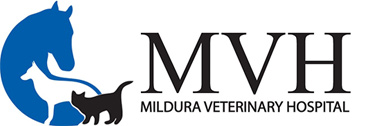At some stage thought their life you will have to leave your trusted friend in the hands of someone else to have an operation. Most pets have their first (and hopefully only) surgery when they are quite young – their desexing operation. But what if they have to have another surgery? What should you expect?
What’s the difference?
As veterinarians we differentiate between soft tissue surgery & orthopaedic surgery. Soft tissue surgery is surgery on skin, muscle or inside the abdomen or the chest. Orthopaedic surgery is surgery on the bones, joints or associated tendons or ligaments.
Why would my pet need surgery?
As veterinarians we differentiate between soft tissue surgery & orthopaedic surgery. Soft tissue surgery is surgery on skin, muscle or inside the abdomen or the chest. Orthopaedic surgery is surgery on the bones, joints or associated tendons or ligaments.
What am I to expect on the day of surgery?
Most pets will need to come into the clinic on the morning of the surgery. After filling out a hospital admission form, one of our dedicated team will admit them to the hospital ward. You are more than welcome to go with our staff to help them settle in although with all the new sights & sounds most pets are too excited to be worried. After a pre-anaesthetic examination by the surgeon, an intravenous catheter is placed and blood may be taken if the vet has recommended blood tests.
Sedation is usually administered a couple of hours prior to surgery to help facilitate a smooth & gentle transition to general anaesthesia.
What happens in surgery?
When the pet is ready for surgery general anaesthesia is administered from either an intravenous injection and/or an inhalational gas through a tube placed in the windpipe. During the anaesthesia & surgical procedure our team of dedicated nursing staff will monitor your pet’s heart rate, breathing rate and blood oxygen levels. Depending on the type of surgery your pet is undergoing they may have a skin or abdominal incision, they may have tissue removed or wounds repaired. If a large amount of tissue is removed the surgeon may place a drain which helps draw fluid away from the surgery site stopping undue pressure on the suture line. Sometime a row of neat stitches is all that is obvious from your pets’ surgery!
What will happen after surgery?
During recovery your pet is consistently monitored by our team of well trained nurses to ensure they are clean, dry, warm and settled. If a bandage has been applied the nurses will monitor your pet to ensure that they adjust to it & don’t lick or chew at it or their sutures. If this is the case, or if you have doubts about being able to stop them licking or chewing we will place an Elizabethan collar around their neck to stop this. These should be worn at all times unless full supervision can be given.
What will I need to do once my pet is home?
It is important to follow the discharge instructions given. Most pets need to be kept quiet for a period of time (sometimes up to 2 weeks) depending on what surgery they have undergone. It is important too to monitor the wound & contact your friendly team at MVH if you are at all worried. All medication must be given to the end of its course & all recommended post surgical checks must be followed.
